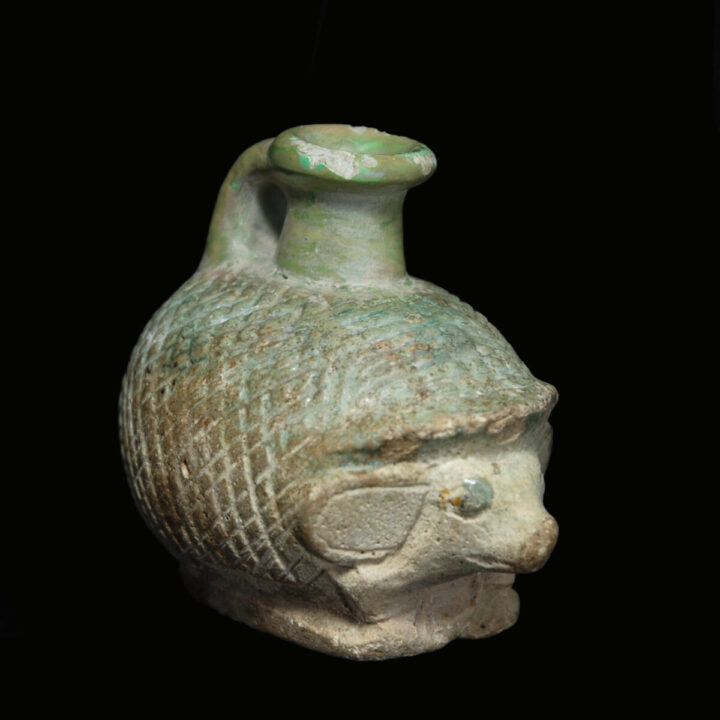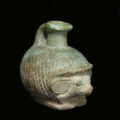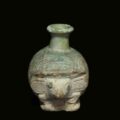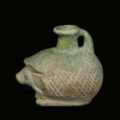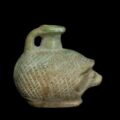Eastern Greek Faience Aryballos in Form of a Hedgehog
Culture: Greek/Naucratis
Period: 6th century B.C.
Material: Faience
Dimensions: 7.5 cm long; 6.7 cm high
Price: Sold
Ref: 2601
Provenance: Acquired in the Parisian gallery La Reine Margot, the latest in the 1990s. Thence auctioned with Delorme & Collin du Bocage in Paris on 1 August 2011, lot 30. Last with Bonhams Paris on 7 October 2021, lot 1.
Condition: Small chips on the rim, otherwise wonderfully preserved with remnants of the glazing
Description: Charming aryballos of green glazed faience in form of a hedgehog, where precious oils were stored. The vessel stands on a flat base, above the legs of the animal are accentuated. The body is engraved with a spine pattern, except for the head and the spout. The face of the hedgehog with long, tapering and in the front rounded snout, black eyes and large, far protruding ears. The spout is cylindrical with an outward turned, rounded rim and a semi-circular handle from the rim to the shoulder. Hedgehogs became a popular form of cosmetic vessels during the 6th and 5th century B.C. because their spines provide protective associations. The aryballoi were possibly produced in Naucratis, the Greek commercial city in the western Nile Delta in Egypt. See for the type the very similar example in the Metropolitan Museum of Art in New York with the Accession Number 29.62, as well as in the Walter Art Museum in Baltimore with the Accession Number 48.2863.



